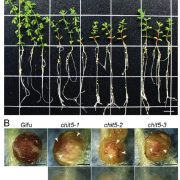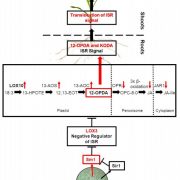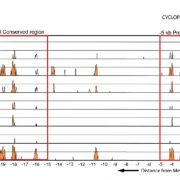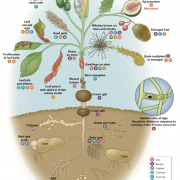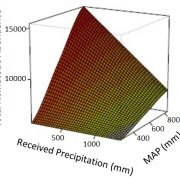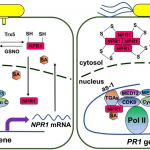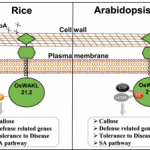Mechanistic insights into host perception by a fungal pathogen (PNAS)
 Host perception is crucial for soil-borne microbes to successfully colonize plant roots. Ding et al. conducted transcriptome analysis of the fungal pathogen Fusarium graminearum (Fg) in the presence of its host plant Brachypodium distachyon (Bd), either without direct contact (precontact) or during colonization. Fg showed distinct transcriptome patterns between the precontact and colonization stages. The authors showed that precontact transcriptional reprogramming in Fg is triggered by plant-derived small molecules induced upon fungal recognition. Fg produces nitric oxide (NO) during the precontact stage and exogenous treatment with NO mimicked the precontact fungal gene expression. Reverse genetics screening of differentially regulated fungal genes identified 15 out of 19 mutants showing reduced virulence in the host plant. Among these genes was FgANK1, an ankyrin-repeat domain-containing protein. The fgank1 mutant lacked host-induced NO production and marker gene expression. Yeast-two hybrid screening identified that FgANK1 interacts with the transcription factor FgZC1. In vivo interaction between FgANK1 and FgZC1 requires precontact with Bd, and the fgzc1 mutant was, like the fgank1 mutant, abolished in NO production and impaired in virulence. Together, the authors proposed a model where sensing of host-derived signals induces FgANK1, which, together with FgZC1, promotes NO production in the fungus to control various processes, including virulence-associated functions. This study provides insights into a two-way molecular dialogue between plants and a fungal pathogen in the rhizosphere. (Summary by Tatsuya Nobori @nobolly) Proc. Natl. Acad. Sci. USA 10.1073/pnas.1918977117
Host perception is crucial for soil-borne microbes to successfully colonize plant roots. Ding et al. conducted transcriptome analysis of the fungal pathogen Fusarium graminearum (Fg) in the presence of its host plant Brachypodium distachyon (Bd), either without direct contact (precontact) or during colonization. Fg showed distinct transcriptome patterns between the precontact and colonization stages. The authors showed that precontact transcriptional reprogramming in Fg is triggered by plant-derived small molecules induced upon fungal recognition. Fg produces nitric oxide (NO) during the precontact stage and exogenous treatment with NO mimicked the precontact fungal gene expression. Reverse genetics screening of differentially regulated fungal genes identified 15 out of 19 mutants showing reduced virulence in the host plant. Among these genes was FgANK1, an ankyrin-repeat domain-containing protein. The fgank1 mutant lacked host-induced NO production and marker gene expression. Yeast-two hybrid screening identified that FgANK1 interacts with the transcription factor FgZC1. In vivo interaction between FgANK1 and FgZC1 requires precontact with Bd, and the fgzc1 mutant was, like the fgank1 mutant, abolished in NO production and impaired in virulence. Together, the authors proposed a model where sensing of host-derived signals induces FgANK1, which, together with FgZC1, promotes NO production in the fungus to control various processes, including virulence-associated functions. This study provides insights into a two-way molecular dialogue between plants and a fungal pathogen in the rhizosphere. (Summary by Tatsuya Nobori @nobolly) Proc. Natl. Acad. Sci. USA 10.1073/pnas.1918977117


